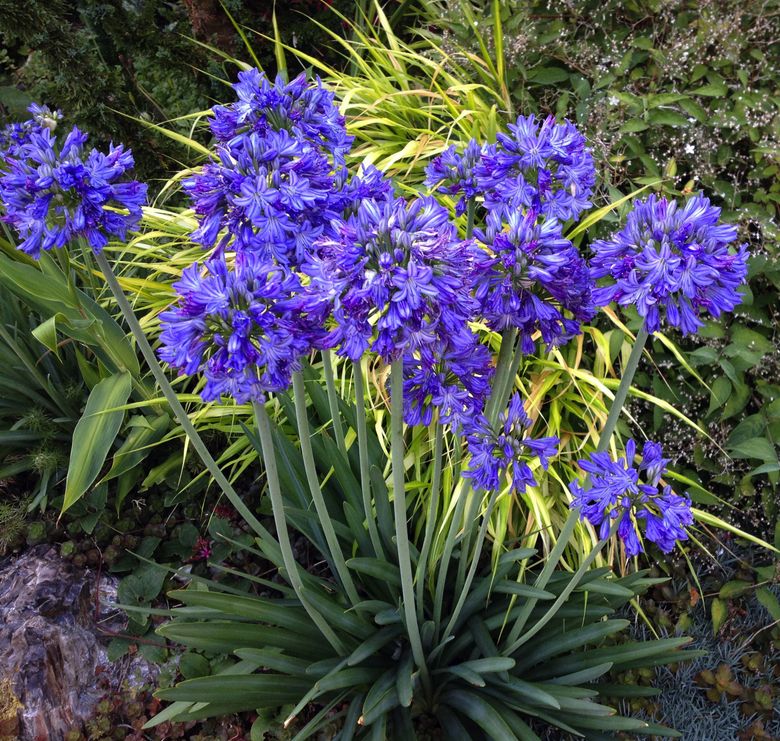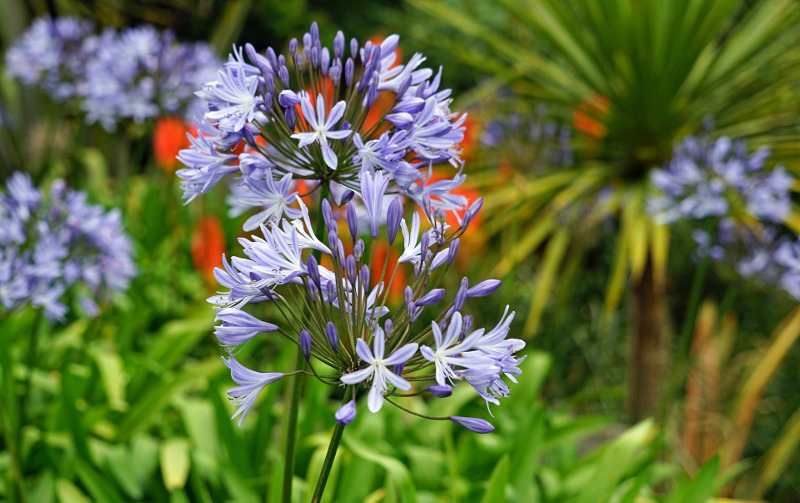Agapanthus Growing Conditions: Soil, Sunshine, and Watering
Grasping the Art of Agapanthus Treatment: Crucial Actions for Healthy Growth and Vivid Flowers
In the realm of gardening, the farming of agapanthus stands as a gratifying undertaking for those that seek to support these elegant blooming plants. With their striking blossoms and graceful vegetation, agapanthus has actually captured the focus of gardeners worldwide. However, accomplishing ideal growth and lively blooms calls for a nuanced strategy that encompasses various crucial actions. From choosing the right variety to mastering trimming strategies, the journey towards growing flourishing agapanthus plants is complex and holds the vital to opening the full capacity of these organic gems.

Choosing the Right Agapanthus Range

When picking the best Agapanthus variety for your yard, consider variables such as climate viability, flower shade, and development routine. Additionally, take into consideration the environment in your area to make certain the Agapanthus variety you pick can flourish in your specific problems. Recognizing the growth routine of various Agapanthus selections is essential for correct placement within your garden.
Perfect Planting Problems
Considering the optimum environmental demands is essential for effective Agapanthus growing. Agapanthus grows in well-draining soil with a somewhat acidic to neutral pH level. When planting, select an area that receives complete sunlight to partial color. In hotter environments, providing some afternoon shade can protect against scorching of the leaves. Agapanthus plants are sensitive to chilly temperature levels and must be secured from frost throughout winter months.
To ensure healthy development and vivid blossoms, plant Agapanthus bulbs at a deepness of concerning 2-4 inches and area them 8-12 inches apart. Adding raw material, such as compost, to the soil can enhance drain and fertility, advertising durable origin advancement. Mulching around the base of the plants assists maintain dampness and subdues weed development. Routine watering is critical, especially during the growing period, to maintain the dirt constantly wet yet not saturated.
Watering and Fertilizing Tips
Preserving appropriate wetness degrees and providing essential nutrients are key components in the treatment routine for Agapanthus plants. When it comes to sprinkling Agapanthus, it is crucial to strike an equilibrium. These plants choose constantly damp soil yet are vulnerable to root rot if overwatered.
Feeding Agapanthus is vital for promoting healthy development and respected flowers. Apply a balanced fertilizer, such as a 10-10-10 formula, in the early spring as brand-new growth emerges. By complying with these watering and feeding ideas, you can guarantee your Agapanthus plants flourish and create vivid, lasting blossoms.
Trimming Strategies for Agapanthus
Pruning Agapanthus plants at the suitable times and with appropriate methods is important for maintaining their health and promoting ideal growth and flowering. The perfect time to prune Agapanthus remains in late wintertime or very early spring before new development arises. Begin by getting rid of any kind of dead or yellowing leaves near the base of the plant. Cut them as close to the ground as feasible without harming the emerging shoots.
For flowered stems, wait up until the flowers have actually perished and then trim them back to the web base. This not only cleans the plant's appearance but also encourages the growth of brand-new flower buds. Deadheading spent flowers can also redirect the plant's power into producing even more blooms instead of establishing seeds. Nonetheless, if you wish to accumulate seeds for breeding, leave some blossoms to dry and mature on the plant.
Bear in mind to make use of tidy, sharp tools to make accurate cuts and reduce the risk of introducing illness. Agapanthus. Normal trimming will aid keep your Agapanthus looking neat and healthy and balanced while making sure an abundant display of attractive blossoms
Handling Usual Parasites and Diseases
After guaranteeing correct trimming methods for Agapanthus, it is necessary to address common parasites and view it now illness that can influence the health and wellness and vigor of these plants. One common parasite that influences Agapanthus is the Agapanthus gall midge.
One more typical concern is fungal leaf look at this site place, which provides as dark lesions on the leaves. To stop fungal diseases, ensure great air circulation around the plants, prevent overhead watering, and eliminate any type of infected leaves quickly. Additionally, Agapanthus plants can deal with origin rot if they are planted in improperly draining pipes soil. To prevent this, plant Agapanthus in well-draining soil and avoid overwatering. By being vigilant and taking punctual activity versus bugs and conditions, you can help your Agapanthus plants thrive and create vibrant blossoms.

Final Thought
Finally, understanding the art of agapanthus treatment includes picking the best range, providing optimal growing conditions, proper watering and feeding, appropriate pruning strategies, and attending to typical parasites and conditions. By adhering to these essential actions, you can ensure healthy development and vibrant blooms for your agapanthus plants. Remember to frequently keep an eye on and maintain your plants to advertise their general well-being and long life.
To guarantee healthy growth and dynamic blossoms, plant Agapanthus bulbs at a depth of concerning 2-4 inches and area them 8-12 inches apart. By complying with these watering and feeding suggestions, you can guarantee your Agapanthus plants grow and generate vivid, long-lasting flowers.
One typical pest that affects Agapanthus is the Agapanthus gall midget. Additionally, Agapanthus plants can experience from root rot if they are planted in improperly draining soil. By following these crucial steps, you can guarantee healthy and balanced growth and dynamic flowers for your agapanthus plants.